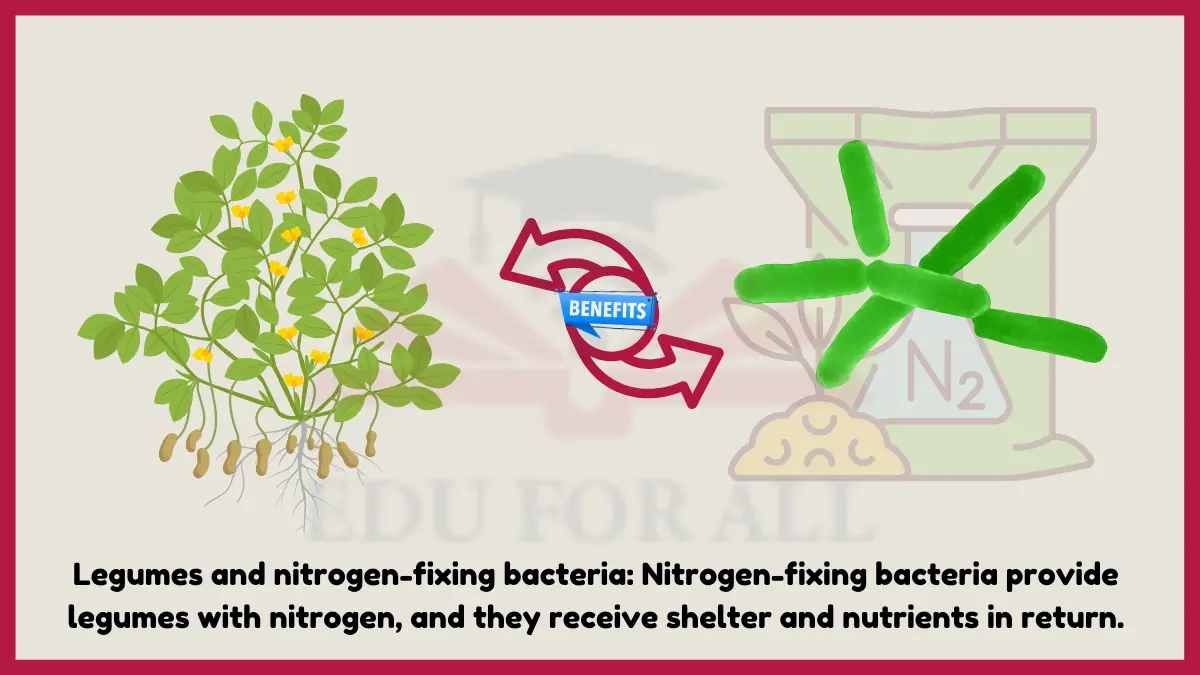Mutualism is a symbiotic relationship where both organisms are getting something out of it. Like, bees and flowers, the bees get nectar and pollen from the flowers, and the flowers get pollinated by the bees. It’s a win-win situation.
Acacia trees and ants, oxpeckers and mammals, humans and intestinal flora, coral reefs and zooxanthellae, bumblebees and tomato plants, clownfish and sea anemones, cattle egrets and large herbivores, pilot fish and sharks, lichen, flowering plants and mycorrhizae, dogs and humans, and legumes and nitrogen-fixing bacteria are some common examples of Mutualism.
In each of these examples, the two organisms have evolved together to rely on each other for their survival.
- Examples of Mutualism
- 1. Bees and flowers
- 2. Acacia trees and ants
- 3. Oxpeckers and mammals
- 4. Humans and intestinal flora
- 5. Coral reefs and zooxanthellae
- 6. Bumblebees and tomato plants
- 7. Clownfish and sea anemones
- 8. Cattle egrets and large herbivores
- 9. Pilot fish and sharks
- 10. Lichen
- 11. Flowering plants and mycorrhizae
- 12. Dogs and humans
- 13. Legumes and nitrogen-fixing bacteria
Examples of Mutualism
Here are 15 common examples of mutualism in biology:
1. Bees and flowers
Bees and flowers are one of the most common examples of mutualism. Bees gather nectar and pollen from flowers to feed their colonies. In return, bees transfer pollen from plant to plant, enabling the plants to reproduce. This relationship is essential for both bees and flowering plants.

2. Acacia trees and ants
Acacia trees provide food and shelter for ants. In return, the ants protect the trees from herbivores. This relationship is beneficial for both the trees and the ants.

3. Oxpeckers and mammals
Oxpeckers are birds that eat ticks and other parasites from the skin of large mammals. The mammals benefit from having the parasites removed, and the oxpeckers benefit from having a source of food.
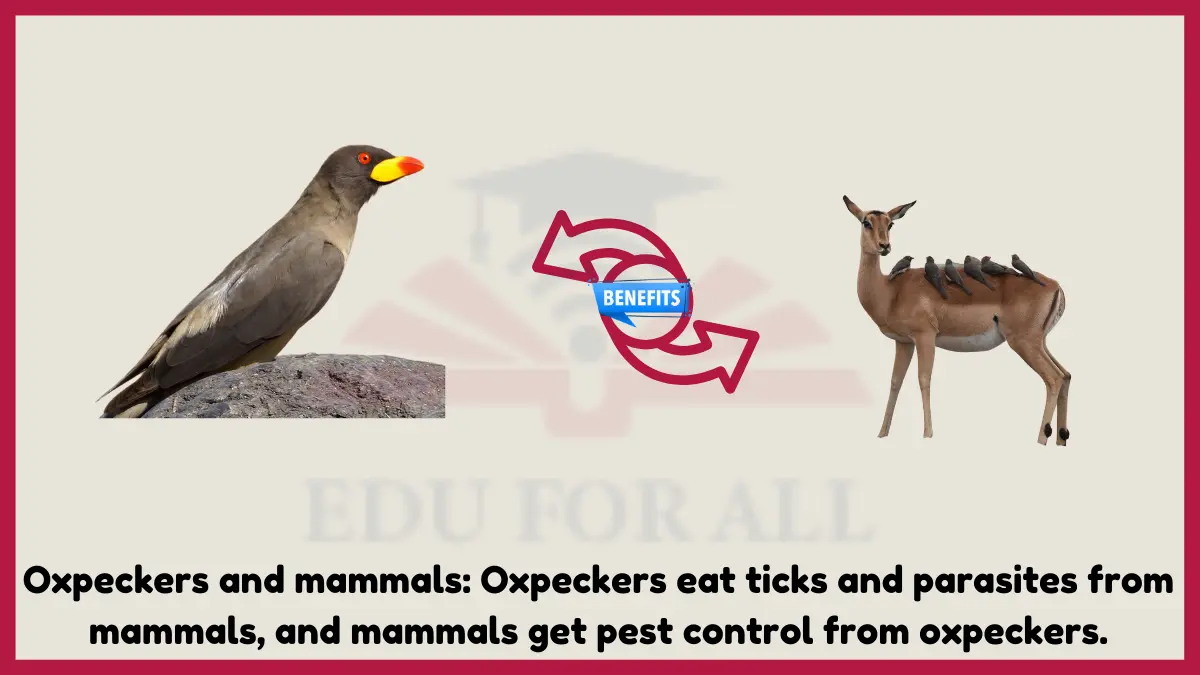
4. Humans and intestinal flora
The human digestive system is home to trillions of bacteria that help us to digest food. In return, we provide the bacteria with a warm, safe place to live. This relationship is essential for human health.
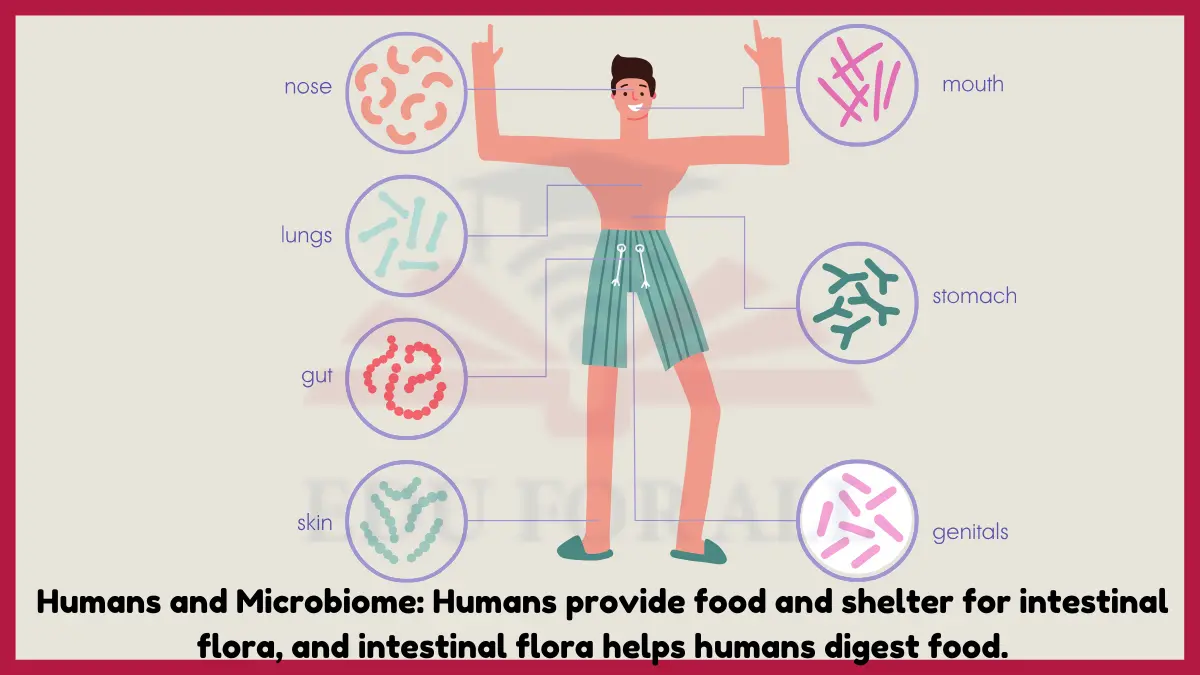
5. Coral reefs and zooxanthellae
Coral polyps live symbiotically with zooxanthellae, which are tiny algae that photosynthesize food for the coral. The coral provides the zooxanthellae with a place to live and protection from predators. This relationship is essential for the survival of coral reefs.
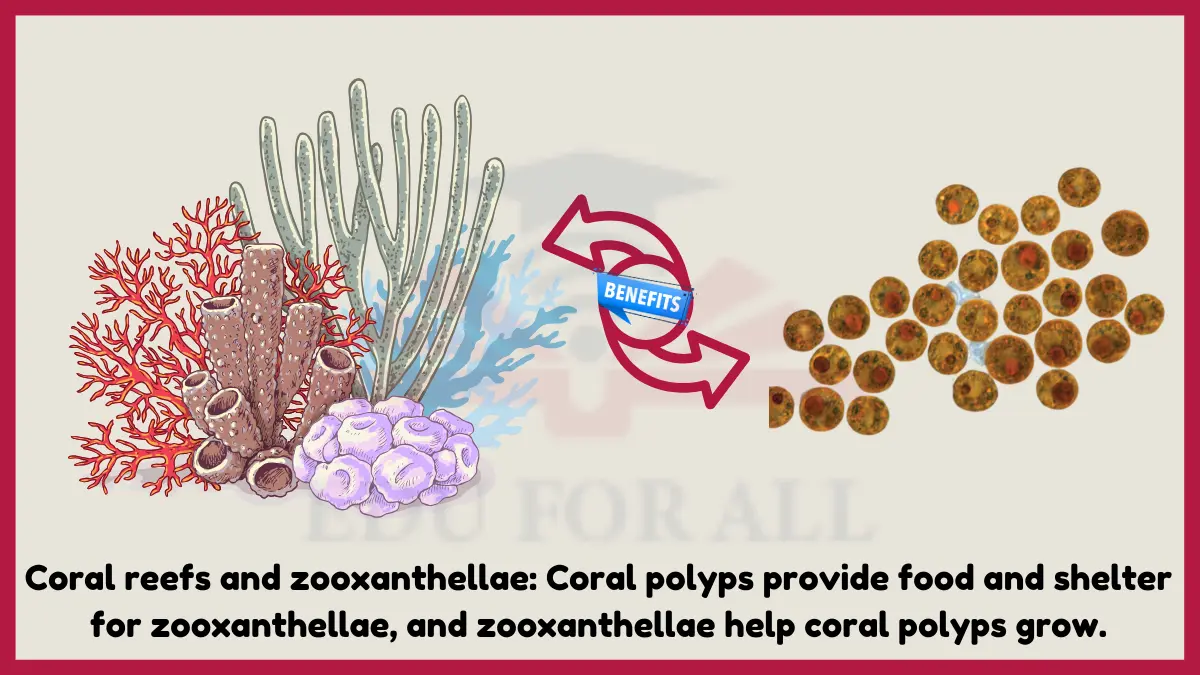
6. Bumblebees and tomato plants
Bumblebees transfer pollen from tomato plant to tomato plant, enabling the plants to produce fruits. The bumblebees benefit from the nectar that the plants produce. This relationship is beneficial for both the plants and the bees.

7. Clownfish and sea anemones
Clownfish live among the tentacles of sea anemones, which are predators that can sting and kill other fish. The clownfish are protected from predators by the sea anemones, and they also help to clean the sea anemones. This relationship is beneficial for both the clownfish and the sea anemones.
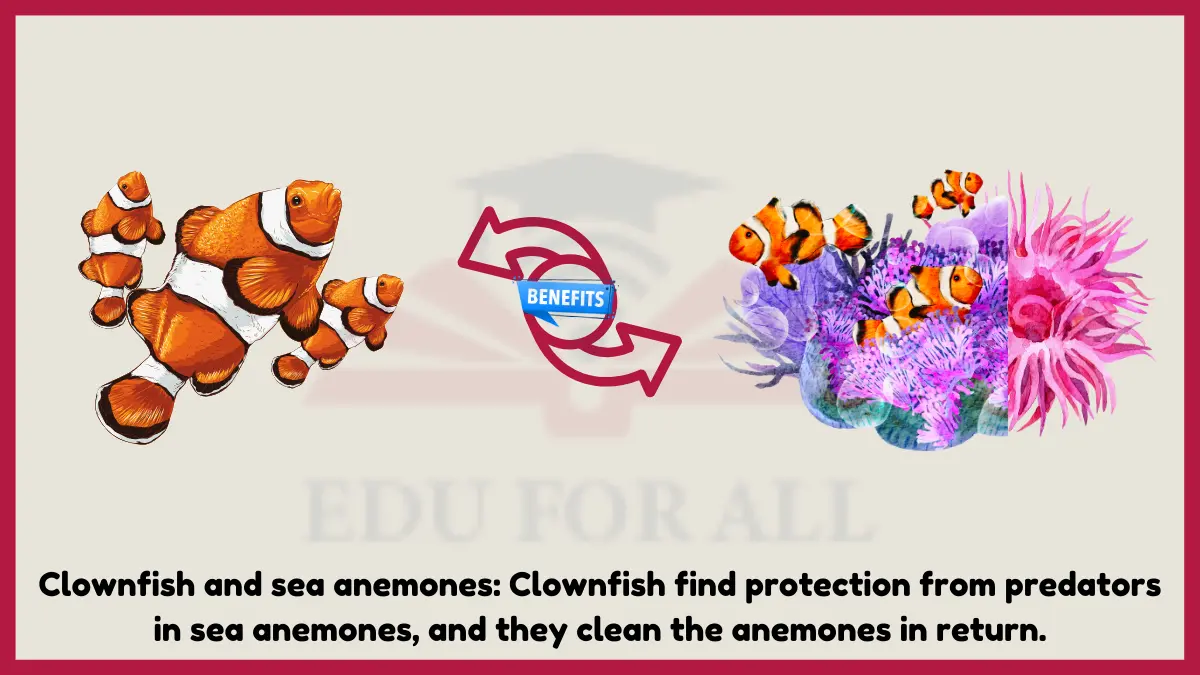
8. Cattle egrets and large herbivores
Cattle egrets ride on the backs of large mammals, such as cows and rhinos, to catch insects that are stirred up by the mammals’ hooves. The mammals benefit from having the insects removed, and the cattle egrets benefit from having a source of food.

9. Pilot fish and sharks
Pilot fish eat parasites from the skin of sharks. The sharks benefit from having the parasites removed, and the pilot fish benefit from having a source of food and protection from predators.
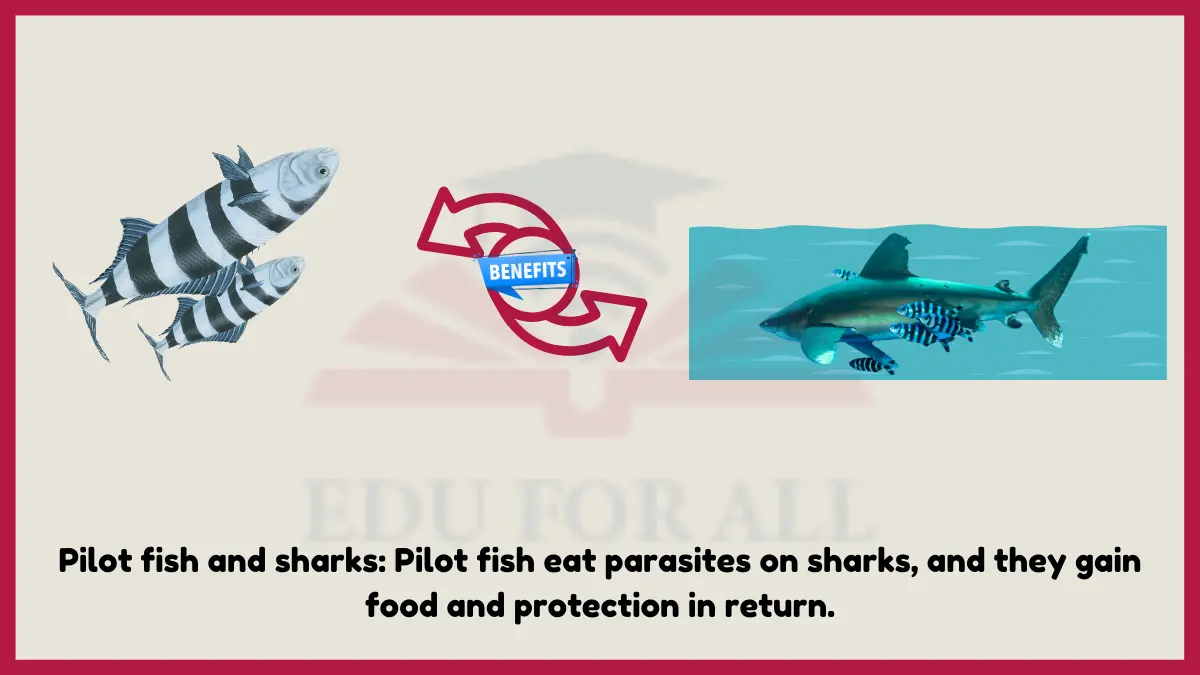
10. Lichen
Lichen is a symbiotic relationship between a fungus and an alga or bacterium. The fungus provides the alga or bacterium with a place to live and protection from the environment. The alga or bacterium provides the fungus with food from photosynthesis. This relationship is beneficial for both the fungus and the alga or bacterium.
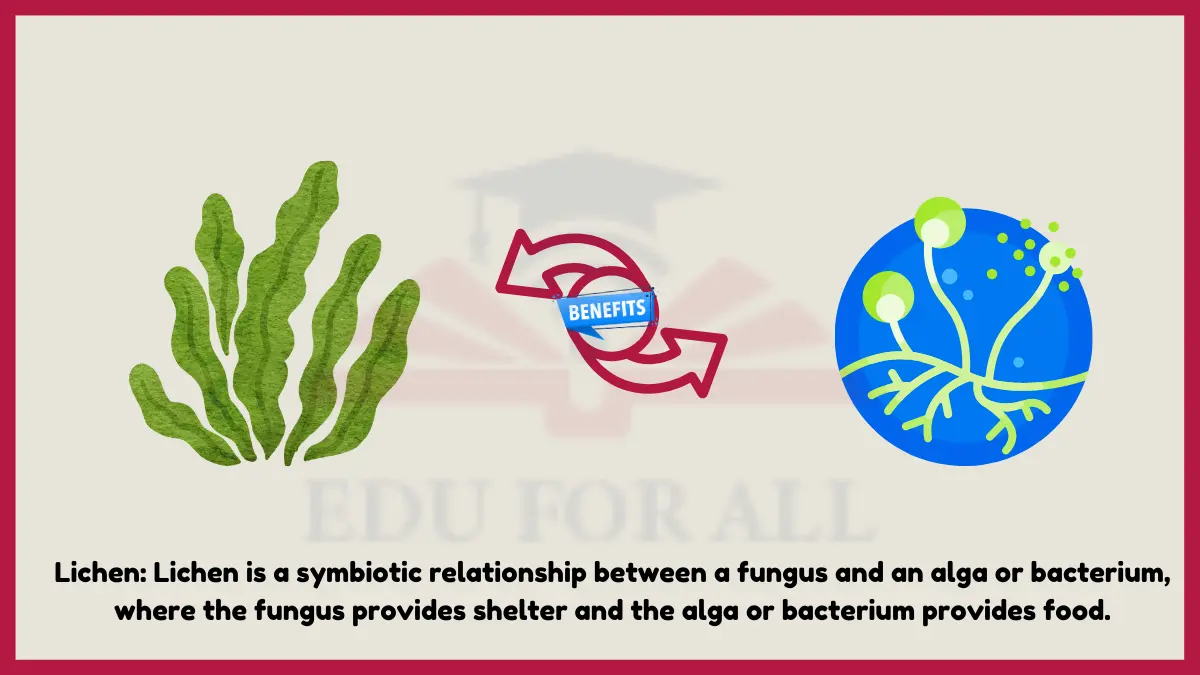
11. Flowering plants and mycorrhizae
Mycorrhizae are fungi that grow in the roots of flowering plants. The fungi help the plants to absorb nutrients from the soil, and the plants provide the fungi with food from photosynthesis. This relationship is beneficial for both the plants and the fungi.
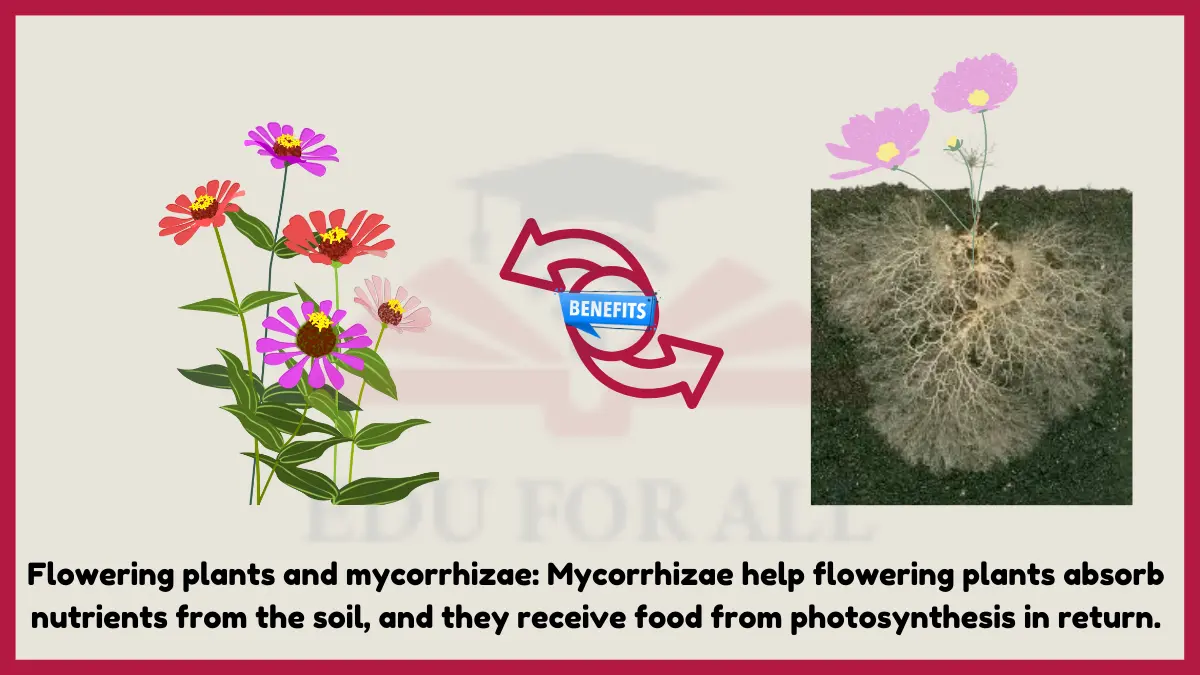
12. Dogs and humans
Dogs and humans have a long history of co-domestication. Dogs provide humans with companionship, protection, and help with herding and hunting. Humans provide dogs with food, shelter, and care. This relationship is beneficial for both dogs and humans.
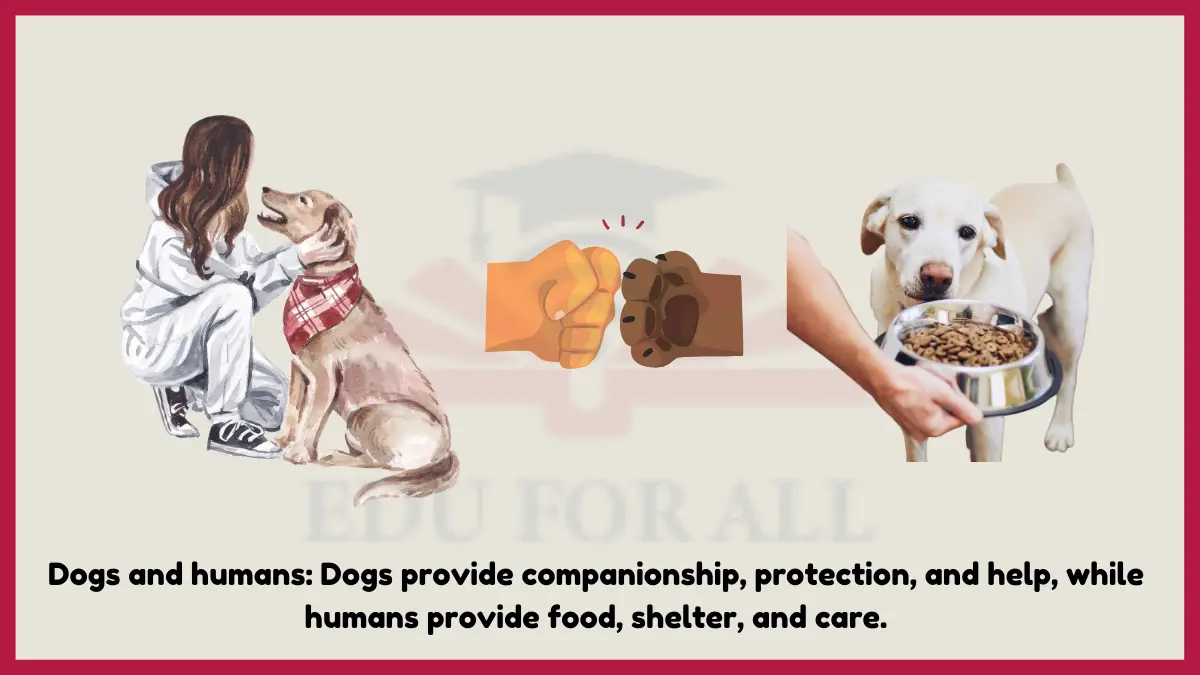
13. Legumes and nitrogen-fixing bacteria
Legumes, such as peas, beans, and alfalfa, have a symbiotic relationship with nitrogen-fixing bacteria. The bacteria convert nitrogen from the air into a form that the plants can use. The plants provide the bacteria with a place to live and protection from the environment. This relationship is beneficial for both the plants and the bacteria.
